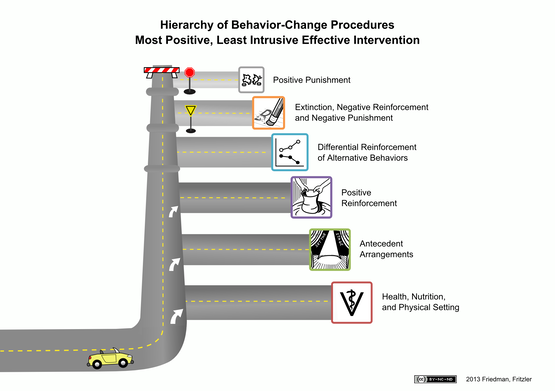
I recently reviewed my blogs and noticed patterns developing. I have discussed alpha theory at length and why it does not work. I have discussed learning theory concepts like Applied Behaviour Analysis, Operant Conditioning and why these principles should be used. With this blog, I wanted to delve even further into these concepts discussing how they should be used when choosing a quality trainer and training program
Many of you know that I have a strong background in social work. I received my Bachelor of Arts, Bachelor of Social Work and Masters of Social Work from Memorial University of Newfoundland and Labrador. With this educational background I have a deep foundation in psychology and in particular, behaviour modification. I worked as a child protection social worker for 16 years helping families design plans for future development and change. I also worked as a social worker with the Child Development and Neurology Unit at the Janeway Children’s Hospital working with children within the Autism Spectrum. It was amazing work! In both roles, I received the opportunity to study and work heavily with classical and operant conditioning, learning theory and applied behaviour analysis. All of which HEAVILY influence my work with dogs and their owners.
For those who have read my blogs, and know some of the scientific community I highly recommend, one name I mention a lot is Dr. Susan Friedman. Dr. Friedman is a psychology professor at Utah State University, specializing in applied behavior analysis and behavior change. Over the last decade, she has pioneered the dissemination of ABA principles, procedures and ethical standards to improve the quality of life for all learners. She is often overlooked when it comes to dog training as her focus has been primarily on parrots. However, her work is fascinating and a must read for anybody studying animal behavior shaping and modification. Check out behaviorworks.org for some great reading. The “written works” section is one that is on the recommended reading list for all my training team.
One of the concepts she has heavily promoted is the idea of trainers adopting an Ethical Hierarchy Of Training Behavioural Change. She has reiterated what trainers like Dr. Ian Dunbar and Jean Donaldson have been saying for decades, the use of punishment in training is a slippery slope. There exists other better, safer means to train and if those training methods are available to us, they should be used and exhausted before resorting to less positive interventions more intrusive interventions.
This concept has been adopted by many training organizations including the Association of Professional Dog Trainers. When I started the Ken Reid Newfoundland’s Dog Whisperer Dog Training Program it is a concept I placed at the core of the program.
To give you an introduction to the Hierarchy, here is a conceptual diagram detailing the fundamental principles

Most of us are familiar with Maslow’s Hierarchy of Needs.
If you are not, Here Is As Good A Description As Any
The Humane Hierarchy of Training is set up in a similar way.
It states that when it comes to training dogs, you should exhaust the least intrusive, most positive means to encourage behavior change before moving on to more intrusive less pleasent means of behavior modification. This is a concept known as LIMA for “ Least Invasive, Minimally Aversive”. A good quality trainer will have a deep training well in which to draw. The trainer will not be a one hit wonder as is often the case with people subscribing to the idea of dominance training:
A dog is bting you…he needs to know who his alpha is.
A dog is peeing on the floor when you leave, he is doing it to get revenge for your absence.
Your dog is pulling on leash, it is because he is trying to walk you.
Your dog is growling when you approach his food dish, he is trying to be dominant to you
Statements like these are false…see On Pack Theory, Being an Alpha and Other Malarchy
Not only are they wrong but if adhered to, they often encourage the use of very confrontative means to address the issues.
One of the many pitfalls with viewing problems in this manner and attempting to address them with punitive means is that dogs really do not think this way. Sure, the means to address this type of thinking may mean that the behavior starts to decrease or even be eliminated BUT, the problems often get compounded or other more serious issues begin to emerge .
The Ethical Hierarchy of Training states that, a quality trainer will have multiple means to address a presenting issue subscribing to the least intrusive first, thoroughly exhausting those means before moving further up the hierarchy. A quality trainer will Examine Problems As a Whole. A quality trainer will know that there are multiple ways to address an issue and use evidence based practice to shape interventions.

Some of you may be looking at the above diagram and asking yourself, “What does all of this mean?”
Here is a brief description of each pit-stop.
Health, Nutrition and Physical Setting: This is the first stop on the list. When viewing issues, the health, nutrition and physical environment of the dog should always be examined first. Is your older dog suddenly peeing in the house? Rather then looking toward behavior modification, first check out medical issues. Does your dog have a UTI? Is your dog having incontenence issues? Is your dog being left alone for too long?
You want to address barking outside? Is your dog left outside all day tethered? How much interaction does he have with others? How much stimulation does he receive?
Health, Nutrition and Physical Setting need to be explored when examining an issue before further means are pursued.
Antecedent Arrangements: This is the second stop on the list. It means that when one looks at a problem behavior, one should examine the circumstances surrounding the behavior. By manipulating the antecedents, you could change the behaviour. Your dog lunges and nips at other dogs, a good trainer will look at the antecedents…is your dog being mobbed by other dogs? Do you bring your dog to the dog park and allow him to get picked on? If so, a good trainer will recommend ways to eliminate these things and suggest positive means of socializing your dog. If your dog starts to enjoy other dogs, your dog will not feel the need to lash out when in their presence.
Positive Reinforcement: This stop goes hand in hand with the second stop. It means that in addition to manipulating the antecedent, a good trainer will also manipulate the consequences. Your dog is lunging at other dogs aggressively, a good trainer will suggest ways to change the antecedent as described above but also further solidify your dog feeling great about other dogs by giving them all kinds of positive feedback for successful interactions.
For more on this, check out a recent blog I posted:
What B.F. Skinner Is Still Trying to Teach Us
Differential Reinforcement of Alternative Behaviour: Your dog is jumping on you? Rather than kneeing them in the chest, squeezing their feet, spraying them with a water bottle…a good trainer will advise you to start rewarding alternative desireable behaviors that are counterproductive to jumping on you. A good trainer will suggest exercises with you so that you are teaching your dog to sit, keep four paws on the floor, mill around your politely which will be rewarded. By doing so, your dog will quickly learn to behave in this manner as opposed to jumping.
For more on these three steps, check out the following links:
Developing Positive Associations
ABCs of Dog Training
Rewarding Naturally Occuring Behaviour
Extinction, Negatve Reinforcement and Negative Punishment: As you are becoming more aware, this one is further down the hierarchy and there are all types of other means which should be explored to achieve behavioural change before opening up this can of worms. These methods are often criticized and rightfully so. They are often misused. However, if done properly using the concept of LIMA, less intrusive minimally aversive means, the methods can work quite well.
Extinction simply means we will remove that which is causing the behavior. A dog barks to get attention, you remove the attention when the dog barks. Eventually the barking will fade and be extinguished. Negative reinforcement means that we remove something the dog dislikes when he does something we want him to do. A dog pulls while on the walk, stop walking, only move forward when the dog gives a loose leash. Negative punishment involves taking something away that a dog likes when it does something we do not want. A dog nips, a dog goes into a time out. A dog is on the furniture and growls when approached, a dog is removed from the furniture. It is worth reiterating that negative punishment and reinforcement do not have to be severe nor harsh. These concepts can be an effective means of behavior modification if done correctly with the LIMA principle in mind.
Positive Punishment: This is the last stop. It is often confused with the terms “negative reinforcement” and “negative punishment”. It involves introducing a negative consequence to a dog in order to stop a undesirable behaviour. Usually positive punishment involves the use of training collars, leash jerks, shocks, pokes, hanging, alpha rolls and the like. It is the one area that many “balanced trainers” tend to congregate.
Can it work?
Positive punishment can be effective BUT the timing has to be spot on, and the strength of the punishment regulated closely or the potential for damag increases exponentially. Positive punishment is a very slippery slope. While it can eliminate a particular behaviour, the chance of it leading to other more severe behaviors is great. Positive punishment should only be used as an absolute last resort and only than when every other step has been fully explored and exhausted. When a trainer uses positive punishment techniques correctly, the trainer is walking a razors edge. Too much is abusive, too little, ineffective. Of course, even when positve punishment is done correctly, it is still not teaching a dog what is expected so if it is used, it must be done with the other steps in mind.
Those are brief descriptions to the pit stops in the Ethical Hierarchy of Training.
It is an interesting concept and one that I am proud to be at the core of Ken Reid Newfoundland’s Dog Whisperer Dog Training Program.
What does it mean to you as a dog owner?
We will discuss that in Part Two
